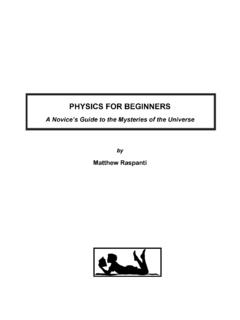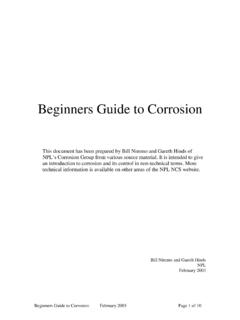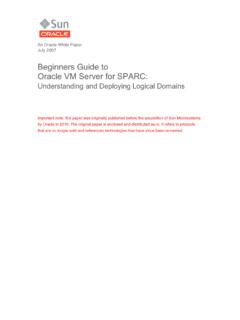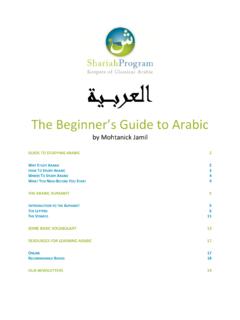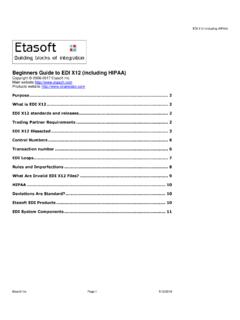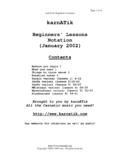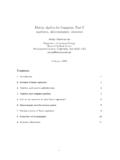Transcription of Beginners Guide to Lake Trout - Welcome to Boreal Bay …
1 Beginners Guide to lake TroutBy Kevin Nelson Owner Boreal Bay LodgeWith assist from Tom - Friend of Girlie Like many endeavors, fishing for lake Trout (or Lakers) has its own sets of rituals whether you are fishing shallow in the Spring and Fall, or jigging deep in the dog days of summer. From choosing your bait, line, and tackle, to deciding what to pack (if anything) for lunch, it's the total experience that makes fishing for Lakers one of the best ways I know to spend a day on the lake . lake Trout are found in deep, cold, clean and clear water lakes, which works for us because that describes Kakagi (Crow) lake to a T, as in Trout .
2 Once you are on the water, the most important part of the ritual is to relax, sit back and take in the surroundings. When you see pine covered islands, steep rock walls, and only the occasional other boat, you are at the right spot for lake Trout this is the beginner 's Guide , let's start with the FACTSLake Trout (Salvelinus namaycush), also called MackinawOntario record: lbs ( kg).Average size: Two to 10 lbs ( to kg).Temperature and habitat: Around 50 F (10 C) in clear, deep : Spawns in fall over boulders or rubble shoals in lakes. Can live 20 years or longer, hence can reach a great : Native to Alaska, Canada and the Great Lakes, they are most abundant in the Great Lakes, Hudson Bay, Alaska, Labrador, New Brunswick, Vermont and Maine.
3 They have been widely introduced to cold waters throughout Canada and the United is known to have 25% of the world population of lake Trout , yet only 1% of Ontario lakes have lake have a raised tooth crest on the head of the vomer. The tail is forked. The least colorful of all Trout , the body is generally blue-gray or bronze-green with pale spots on the side and back. During the fall spawning season fins near the tail become a pale lake Trout feed on freshwater shrimp, plankton, insects and other aquatic invertebrates. Larger ones feed on small fish like cisco, smelt, sculpins, kokanee, whitefish and season for lake Trout in our area is January 1st to end of September.
4 Size restrictions come into effect in September for those using a full limit you probably know more about Lakers than you ever wanted to know. Don't fret, there won't be a test at the rod and reel are critical tools for fishing lake Trout . You need a baitcast reel with a good clutch and drag. An old bass or muskie baitcast reel will work. The reason for the baitcast reel is that it will drop the lure more quickly than a spinning reel because the baitcast spool will spin faster than line will fall off the spinning reel. The baitcast reel clutch knob should be adjusted loose enough for a fast drop of the lure yet tight enough to avoid a backlash when the lure reaches bottom.
5 The drag should be tight enough for a hook set and loose enough for the fish to pull drag. Adjusting the drag a little tight and backing off after the hook set often works well with lake Trout because they often don't fight hard at first. Though dependent upon the gearing, the average baitcast reel will retrieve about two feet of line for each full turn of the crank. It is a good idea to test and check your reel in roughly 100 ' waters, where 50 cranks on near still water would bring your lure very near the rod should have a medium heavy action, but a medium action rod will also work well. A healthy amount of fresh, 12-pound, low visibility monofilament line is preferred.
6 It is strong enough to set the hook and handle most fish, invisible enough to not deter the fishing. Be sure to start the trip with around 300 feet of line, so that the fish do not run your reel out of of the best lures I've found for lake Trout fishing is the River2 Sea Diver Vibe 80. We have a supply of them available for purchase at our lodge. With the Vibe 80 you can cast, troll or jig. The Vibe 80 has two treble hooks which will increase the likelihood of getting a hook in the fish over the single treble hook lures. The factory treble hooks are small enough to set easily and strong enough to hold most fish. The Vibe 80 has been one the most successful lures for new and experienced lake Trout anglers.
7 Before your ready to fish with the Vibe 80 you will want to find the retrieve speed or cadence that brings out the vibration in the lure. Using a meduim heavy rod with 12 pound test, you might not feel the vibration until the lure is within 30' of the boat. Practice a few times and make a note of the cadence and use it often, because the vibration will help in getting the attention of a nearby last piece of equipment critical to jigging for the lake Trout is a depth finder. The high end depth finders have the wonderful ability to show your lure moving on the graph, but even the low priced depth finder will provide enough information to locate some feeding lake Trout .
8 FINDING THE LAKERSAs the summer progresses, the lake Trout will be moving to deeper holes. June will likely find the majority of the lake Trout in 50-80 foot waters. During July and August the lake Trout typically will be in 80-120 foot waters. September lake Trout may be deeper yet, but don't overlook the shallower waters, especially if the lake has cooled. Most of the lake Trout will be near clouds of small bait fish which will show up on the depth finder, sometimes confusing the depth finder into showing it as the the depth finder is key to finding feeding lake Trout . Fish that show up in the bottom 20% of the water column and fish near the thermocline are not the best targets.
9 When the graph shows a solid mark at 60' in 110' water this is probably a lake Trout . If a few bait fish marks show slightly above or below, this is a good sign the lake Trout is in the process of chasing the bait fish and you want to get your lure in the vicinity. Another sign of feeding lake Trout will be if the depth finder is showing a tight cloud of bait fish or possibly confusion of the depth finder about where bottom is located. An example would be the depth reads 130' then shows bottom at 80' for a short distance and bounces back and forth between 80' and 130' readings. The other way to find Lakers is to ask at the lodge, where we will share the latest information on where the fish are best way to estimate the thermocline is to note the depth where you have marked many open water fish on the depth finder.
10 Generally this will be between 15' and 35' most of the summer on Kakagi (Crow) experienced lake Trout fishermen have many techniques and all of them will work. Some have specialized gear such as down riggers, cannon ball sinkers, wireline rods and high tech electronics. In the early season during April and May when lake Trout are shallow some anglers will fish from shore with dead or live bait. Trolling crankbaits in bays and along drop-offs is a very popular early season technique. Occasionally we even see a fly rod being used for lake you arrive to the general fishing area position your boat for a slow drift. If the winds are above 5 mph the options are use the electric trolling motor to slow the drift speed or the preferred approach is to use an island as a slight wind break.


